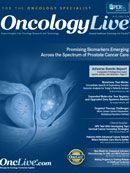Making Progress in Treating Relapse in Childhood Leukemia
Having a robust armamentarium to treat childhood acute lymphoblastic leukemia (ALL) is a major triumph in oncology.
William Carroll, MD
The Julie and Edward J. Minskoff
Professor of Pediatrics
Director, Perlmutter Cancer Center
Having a robust armamentarium to treat childhood acute lymphoblastic leukemia (ALL) is a major triumph in oncology. As a result, survival rates have risen from 10% to 15% in the 1960s to 90% today for the more than 6000 children diagnosed each year with ALL in the United States.
For this most common form of childhood cancer, multiagent chemotherapy serves as the initial treatment.
However, ALL remains a serious disease related to the side effects of treatment and a devastating illness for the 10% to 20% of patients who will relapse following conventional treatment. New therapies are desperately needed to target drug resistance in relapsed patients and against new leukemia pathways.
At NYU Langone Medical Center and its Perlmutter Cancer Center, researchers like my colleague, immunologist and cancer biologist Iannis Aifantis, PhD, chair of Pathology at NYU Langone, and I are leading investigations through a multicenter research effort aimed at finding and testing new drug targets. This work has been greatly aided by a $6.25 million, 5-year research grant, which was funded by the Leukemia & Lymphoma Society to develop new therapies and advance the cure rate for children and young adults with ALL. The grant encompasses four separate research projects spanning six institutions that unite around a common goal: finding targeted treatments for patients with high-risk or relapsed ALL who derive no benefit from existing chemotherapies.
Two of the four projects are taking place at the Perlmutter Cancer Center at NYU Langone. One that I am leading targets drug resistance in ALL patients.
Dr Aifantis’s research efforts focus on identifying the mutations and epigenetic changes involved in T-cell leukemia, in particular, those associated with NOTCH1 overexpression. His team is mapping several common molecular interactions with the goal of finding enzymes or other disease modulators that could be blocked. Importantly, he is testing the impact of a new agent that targets the cell cycle machinery.
A team of researchers from St. Jude’s Children’s Research Hospital, the Children’s Hospital of Philadelphia, the University of Colorado, Nationwide Children’s Hospital, and the University of New Mexico are conducting the other two projects. One seeks to identify and treat a novel subtype of ALL common to older children and young adults called “Ph-like” ALL. The other will use advances in nanotechnology for the treatment of ALL.
My lab team has made significant progress in the discovery of the biological pathways that mediate resistance and relapse.
With the help of the Children’s Oncology Group, a multi-institutional clinical trials consortium supported by the National Cancer Institute, our team analyzed the entire transcriptome from 10 children with pediatric B lymphoblastic leukemia, the most common subtype of ALL. Samples were taken at diagnosis, during remission, and upon relapse some months or as many as 3 years later. By comparing the before and after sequences, the team found that each patient had acquired between one and six mutations that changed the genetic sequence in regions that code for proteins over the course of the disease. In some cases, researchers were able to detect these mutations in a very small subset (0.01%) of the tissue samples at diagnosis; these cells likely expanded because their drug-resistant properties provided the leukemia cells with a survival advantage.
In all, the team documented 20 relapse-specific mutations—none of which had previously been implicated in ALL recurrences. Intriguingly, two patients harbored a mutation in the same gene, NT5C2, which encodes a protein that normally regulates some building blocks used to construct DNA but leads to resistance to an important class of drugs called purine analogues (eg, 6-mercaptopurine and 6-thioguanine) used in ALL therapy. When the researchers fully sequenced the NT5C2 gene in 61 other cases in which pediatric ALL patients had relapsed, they found five more mutations that altered the gene’s coding region.
All seven patients with NT5C2 mutations relapsed within 3 years of the initial diagnosis—an early, particularly hard-to-treat re-emergence likely mediated by the drug resistance.
Armed with the new knowledge, doctors may be better equipped to identify patients likely to relapse. We plan to test the feasibility of screening patients during therapy using sophisticated sequencing technology to pick up low-level mutations in NT5C2—an indication that a mutant clone is growing. We also will continue to research whether that advanced warning could allow doctors to administer separate drugs to beat back the cancer cells and eventually directly inhibit the mutant enzyme.




